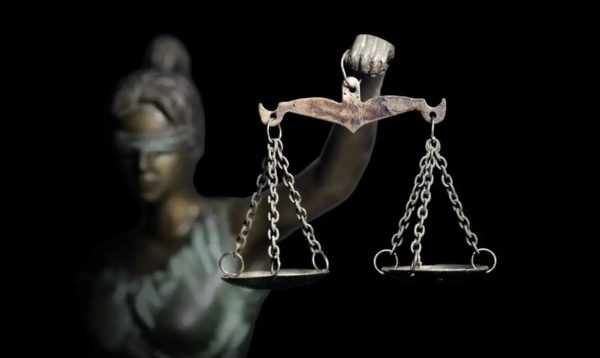Continuity or a clean break? A revolutionary’s testimony

I can’t understand how the courts have sentenced a group of young protestors to an outrageous number of years in prison…
By Gladys Marel Garcia (Joven Cuba)
HAVANA TIMES – Sixty-three years after our Revolution’s victory – guided by the patriotic ideology of the Mambises and Marti of political freedom, social justice and anti-imperialism – and as a veteran of the revolutionary process, I can’t understand how the courts have sentenced a group of young people to an outrageous number of years in prison for taking part in the spontaneous protests on July 11th and 12th 2021. Eight months ago, they demanded a solution to the vulnerable crisis their families and the Cuban people are going through, with shortages and high prices of food, medicines and other essentials that condemn them to a life in poverty.
The courts have charged them with sedition and theft. The social uprising sparked spontaneous protests across the country. I’m still waiting for incriminating evidence that proves all of these young defendants took part in vandalistic acts, throwing stones, sticks and Molotov cocktails. Even so, the courts that have wrongfully tried and sentenced them, as the protest spontaneously broke out with the right to demand their rights. It wasn’t about sedition (or insurrection, rebellion or conspiracy). Nor was it theft, although some criminals took advantage of the situation to rob stores and take goods, which they should answer to the Law for.
Protestors didn’t carry weapons, nor were they linked and guided by US imperialism, or led by any counter-revolutionary organization in Cuba. We didn’t see this on July 11th and 12th, on the TV, or news or subsequent reports, nor in any official press and social media. Just like no counter-revolutionary organization claimed leadership for the social uprising and protests.
The only ones carrying weapons and objects to attack protestors were the police, as well as men and women dressed as civilians, who beat whoever they could find, even if they were minors. One of them shot a participant in the uprising dead, and he still hasn’t been taken to trial for it.
Faced with these facts, my mind wanders back to the funeral protest that took place for the first time in Santa Clara, on May 27, 1957. The dictatorship, and by extension the police and repressive apparatus, had given the order to bury martyrs just with their families present.
Young people gathered outside the funeral home, where the bodies of Agusin Gomez Lubian, Chiqui, and Julio Pino Machado – who were killed in an explosion during one of our actions the day before – refused to comply with Lieutenant- Colonel Cornelio Rojas’ command of taking off their armbands and other demands, so the military officer found himself forced to go to Margot Machado (one of the provincial MR 26-7 leaders and mother of Julio, the leader of the uprising in this city) for them to listen to her.
Hours passed by and the young people just got more and more fired up with Cornelio Rojas’ insisting that the young men only be buried with their family members present, as General Officer Pilar Garcia had ordered from the capital.
That’s when they decided – along with Margot – to rise against this order and walk to the cemetery with the bodies of the fallen young men. That’s what they did. Excited men, women and children gathered on the sidewalk, many of them joining them along the way, while funeral music was played on the radio. Cornelio Rojas, along with the police, guarded the bodies along the way and deployed ambulance chasers and ambulances in the case of a revolutionary uprising.

From that protest, only I was kept prisoner and taken to trial for two months. In the last hearing, on July 29th 1957, I faced my accusers and the Public Prosecutor who was asking for ten years in prison, but Dr. Espinosa, my criminal lawyer, managed to get me acquitted.
Despite evidence found – including: matches, letters with Santiago de Cuba, manifestos, Fidel Castro’s manuscript with guidelines for the clandestine military group to execute acts of sabotage, and other documents and notes-; the lawyer, hired with money we had put aside for graduation costs at the Normal School for Teachers in Las Villas, he managed to influence the judges arguing that this alleged evidence was introduced into my room by those who searched it.
In that hearing, arrangements with the judges, including by my classmate Maria Luisa Trelled, the daughter of one of them; arrangements with the Public Prosecutor’s Office, by his cousin, the priest of Esperanza town church; support from teachers and students, protests, etc. all influenced the outcome.
I am a witness and participant of many street protests, crying out against the Coup d’Etat, for the Constitution to be reinstated and against the Batista dictatorship. I can’t fathom how the leader of the insurrection, rebellion and Cuban Revolution, Fidel Castro, had been sentenced to 15 years in prison by the courts, and was released with other Moncada attackers less than two years later when they were granted amnesty; while the young people who protested in July 2021 have been condemned with such high sentences for an insurrection that never took place.
By my honor, I swear on Chiqui and Julio that I will continue to fight in the name of all three of them against injustice. I am writing this testimony to demand the release of these young people, whose only crime has been to defend the sustenance and needs of their children, parents, families, friends and the Cuban people.
The trials need to be analyzed, defendants who only protested need to be released and adequate sentences need to be given to those who committed acts of vandalism.





